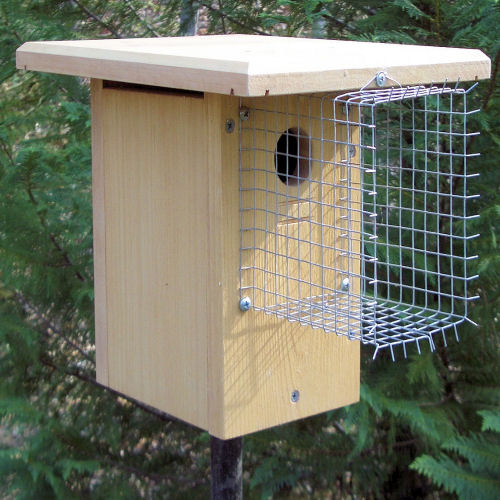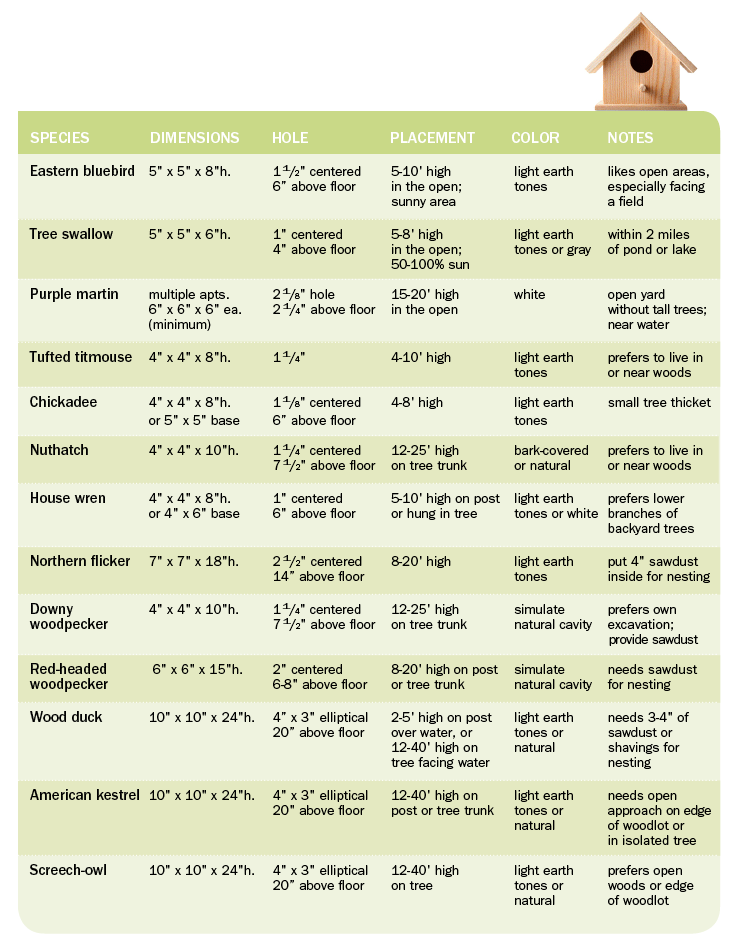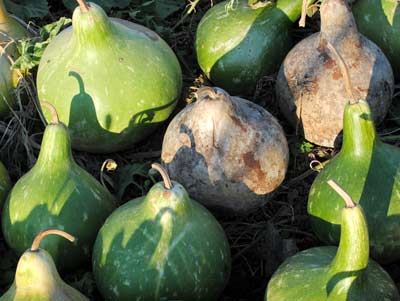Here's our objectives:
- Visible to kids at the school - fun!
- Made well, with long-lasting materials
- Able to be cleaned each season
- Discourages snakes (they kill nestlings in my yard every year, which is a natural process, but I'd rather not welcome the birds to a snake diner)
- Attracts native birds
- Discourages non-native house sparrows (click here to see why)
- Choose an area to make house wren nests to keep them happy (here's why, also check out this link that says house wrens deliberately add spider egg sacs to their nests because the spiders control the mites that attack their young -- awesome!!!)
- Discourages cats and other predators
- Make enough bird houses to put around the entire property, not just the garden. This includes the forest behind the flood catchment in the back of the school and the other boundaries. They need to be about 100 yards apart from each other.
This kind of guard discourages raccoons and cats:
This is how to make the guards (for a larger version click here), and this link has even more specific info on how to make the stovepipe baffle:
These are the hinged sides used to clean the birdhouse, which should have raccoon-proof latch on the bottom:
Here's some DIY bluebird house plans similar to the one in the above photo and here is another good description. Additionally, though most birdhouse recommendations say to put the house 5' off the ground, I've watched cats in my neighborhood jump that high and catch a bluebird parent out of the air as it tried to enter the house. Predator-proof sites say to use metal poles that are 8' - 10' high and sink 2' of that into the ground for stability.
Finally, here are the requirements for various species of birds. If anyone knows how to make these houses we can definitely use them:
Oh yeah, and we're DEFINITELY going to have purple martin bird houses, the site is just perfect for it -- especially after we add all our meadow wildflower plantings. It's possible I have one we can use (it is currently buried underneath my mom's Confederate jasmine vine, so I have to dig it out to see if it is in decent shape). The one I might have looks like this:
I bought some of Dr. David Bradshaw's improved birdhouse gourd seed strain to grow amongst our meadow plants. If they do well, we can add to the martin colony next year.
I know I said "finally" a while back, but we'll be adding bird feeders to the picnic area across from the garden. YAY BIRDS!
P.S. - Maybe not this year, but in the future how cool would it be to install a chimney swift tower and a rocket bat house?









As an aside, I typically enjoy house sparrow populations that nest communally at big box stores and shopping malls. Since they seem to thrive in those nature-deprived environments, I see no need to encourage them among the songbirds in my neighborhood.
ReplyDelete